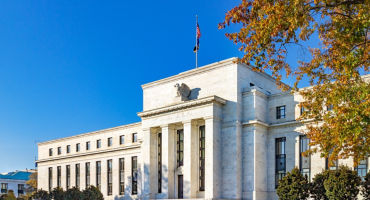- Fixed Income Portfolio Manager
Skip to main content
- Funds
- Insights
- Capabilities
- About Us
- My Account
Our Funds
Fund Documents
Global Multi-Strategy Fund
The views expressed are those of the author at the time of writing. Other teams may hold different views and make different investment decisions. The value of your investment may become worth more or less than at the time of original investment. While any third-party data used is considered reliable, its accuracy is not guaranteed. For professional, institutional, or accredited investors only.
The Federal Open Market Committee (FOMC) yesterday hiked the federal funds rate by 75 basis points (bps) to a range of 3% to 3.25%, the highest level since early 2008. In his post-meeting press conference, US Federal Reserve (Fed) Chair Jerome Powell repledged the FOMC’s resolve to bring inflation down toward its 2% target, even acknowledging the central bank’s willingness to tolerate tipping the US economy into a mild recession, if necessary, to achieve that goal.
From this perspective, I see the FOMC’s strategy as one of aggressively “leaning” into inflation, to the point that tighter financial conditions could begin to choke off growth and push the unemployment rate higher. Unfortunately, I also expect inflation to prove a bit stickier than many investors anticipate, meaning the Fed may have to “leave” the financial markets with little or no support over the course of 2023 — at least until inflation falls enough to allow the Fed to start “cleaning” up the broader economy via monetary policy easing at a later date.1
The Fed’s updated Summary of Economic Projections revealed a deteriorating growth versus inflation trade-off, with below-trend growth and a modest rise in the unemployment rate. Although Fed policy-rate projections showed a notable increase from June, the FOMC apparently does not expect a sharp growth pullback in 2023.
While monetary policy can do little to ease supply-chain bottlenecks or tame supply-driven inflation (core goods prices), it tends to have a much greater influence on the consumer demand side of inflation (core services prices), which is more domestically driven.
Wages are a big input into core services inflation. My leading indicators suggest wages will likely moderate in the coming quarters, giving the Fed leeway to pause its policy-tightening campaign early next year as it assesses the impact of its rate hikes — which generally work with a lag time of 12 – 18 months — on inflation and the labor market. If I’m right, the Fed could “go on hold” sooner than the market thinks. (Futures markets are currently pricing in Fed rate hikes through March 2023, up to a terminal rate of 4.5%.) The unemployment rate ended August at 3.7% and probably needs to rise above 4.5% before the Fed can gain confidence that so-called “demand destruction” will sufficiently lower inflation.
In Powell’s post-meeting press conference, he seemed to convey little urgency to begin selling assets from the Fed’s balance sheet, especially mortgage-backed securities (MBS), which had been a focus of market participants in the run-up to yesterday’s meeting.
One explanation: Mortgage-market activity has slowed in recent months amid the Fed’s pursuit of tighter financial conditions, enabling the central bank to prioritize interest-rate hikes as its primary policy tool in the battle against inflation. As a result, mortgage rates have increased by 300 bps since the start of the year. I also expect home prices to decline by about 10% – 20% from their peak, which should help to further reduce overall inflationary pressures.
As of this writing, I maintain a bias for the US Treasury yield curve to continue to flatten from here. I do not expect the Fed to make an abrupt policy shift to cutting rates next year, but rather to remain on hold for most of 2023 as it monitors the evolution of inflation and other financial conditions.
One reason I don’t see the Fed being able to ease quickly or to fully “clean” up the economy in 2023 is that I suspect inflation may end up being stickier than widely believed, judging by valuations of Treasury Inflation-Protected Securities (TIPS) these days: Their “breakeven” inflation rate of around 2.5% over the next three years simply appears too low to me.
1 The “lean versus clean” debate is usually seen as competing strategies for addressing financial imbalances, but with respect to the current inflation situation, the execution of Fed policy may necessitate a three-step process (see: Stein speech, October 2013).

Chart in Focus: Is the Fed rate cut positive for risk?
Continue readingThe Fed architecture under scrutiny: What are the investment implications?
Continue readingTwilight zone: how to interpret today’s uncertain macro picture
Continue readingStagflation watch: Thoughts on tariffs, inflation, and Fed policy
Continue readingURL References
Related Insights
Stay up to date with the latest market insights and our point of view.

FOMC: Easing into uncertainty
Fixed Income Portfolio Manager Jeremy Forster profiles the Fed's December rate cut, labor market trends, inflation pressures, and the role of anticipated changes to FOMC leaders in 2026.

Chart in Focus: Is the Fed rate cut positive for risk?
In this edition of Chart in Focus, we examine how the Fed’s long-awaited interest rate cut may influence risk assets.

The Fed architecture under scrutiny: What are the investment implications?
Macro Strategist Juhi Dhawan looks at how changes in the Federal Reserve's personnel and decision making could impact policy, the US dollar, and financial markets.

FOMC: Cushioning the US labor market
Fixed Income Portfolio Manager Jeremy Forster analyzes the Fed's decision to cut interest rates at the September FOMC meeting.

Twilight zone: how to interpret today’s uncertain macro picture
Macro Strategist John Butler and Investment Director Marco Giordano explore how to interpret today’s uncertain macroeconomic picture and its key implications.

Rethinking the Fed’s dual mandate
Is it time for a fresh perspective on the dual mandate? Fixed Income Portfolio Manager Brij Khurana explores the potential benefits of reorienting monetary policy toward maximizing productivity.

Stagflation watch: Thoughts on tariffs, inflation, and Fed policy
US Macro Strategist Juhi Dhawan considers signs the US economy may be moving toward a toxic mix of slowing growth and rising inflation, creating challenges for the Fed and investors.

Severance: The split between the economy and the markets
While markets have bounced back since Liberation Day, policy changes and macro data bear watching. Heading into the second half of 2025, we're focused on relative opportunities across asset classes created by disconnects and divides between markets and economies.

Oh baby, baby, it’s a wild world
Just one quarter into the year, many policy and economic assumptions have been turned on their head. What does it all mean for equity, bond, and commodity markets around the world? Members of our Investment Strategy & Solutions Group offer their outlook.

Fed delivers rate cut, but hawkish 2025 guidance sends yields up
Fixed Income Analyst Caroline Casavant examines the outcome of the December 18 Federal Open Market Committee meeting and the implications for rates, inflation, and real growth.

Going their separate ways: Capitalizing on bond divergence
Our fixed income experts discuss how to position portfolios for a world of uncertainty and divergence, exploring key themes and evolving bond opportunities for 2025.
URL References
Related Insights